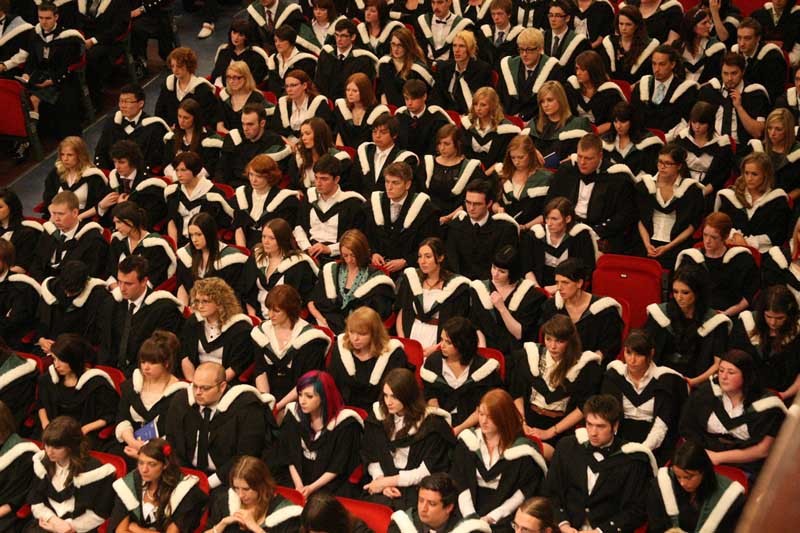More than two-thirds of the students who graduated from Scottish universities a year ago have found jobs.
A survey of over 19,000 graduates, published by the Higher Education Statistics Agency, has found that 62% are working and another 6% are combining jobs with further study.
Despite the economic downturn, that total of 68% is 3% higher than the figure for 2008/09.
There has been a 3% decline, to 20%, in the proportion of graduates who are continuing in full-time education.
Another 7% are unemployed, the same as the year before, and 3% are said to be unavailable for employment.
Only half those questioned gave details of the salaries, but the average for a full-time job is £20,000.
Professional and technical occupations are most common, accounting for over two-thirds of the jobs, but one person in eight is in sales or customer service.
The survey found that 88% of the working graduates who lived in Scotland before starting their studies have remained here, with the rest mostly moving to England to work.
Across the UK, 70% of graduates are working or combining a job and further study, up 4% on 2008/09, and 9% are unemployed, down 1%.
A student’s choice of course has been a big factor in their success in finding work. Unemployment rates vary from almost nil for medical and dentistry graduates and just 5% for those who studied education, to 13% for mass communications graduates and 14% for computer science.
